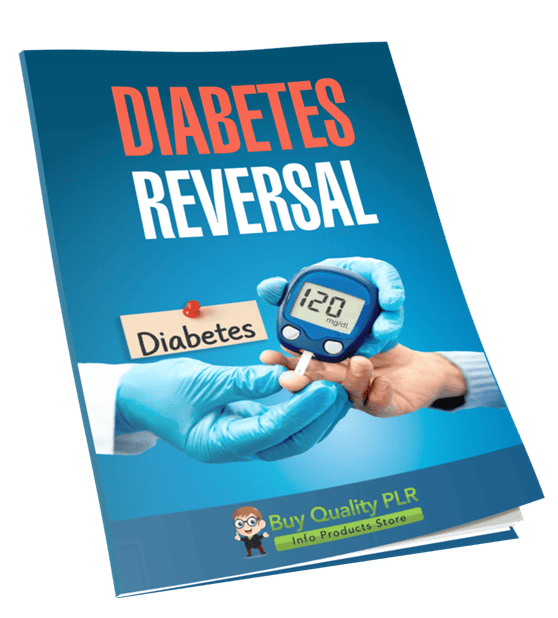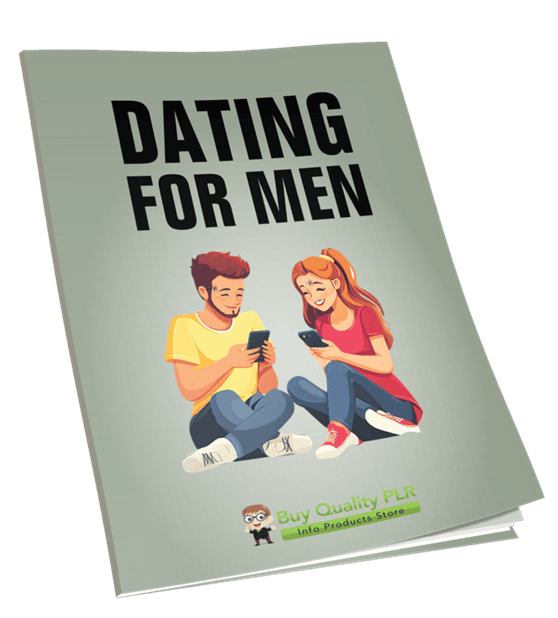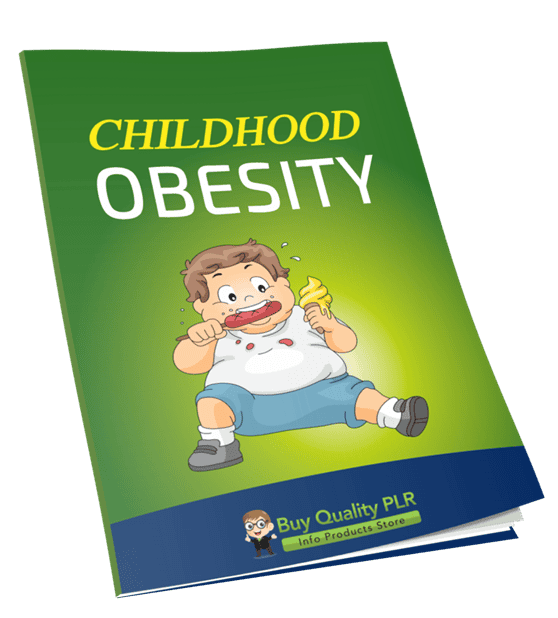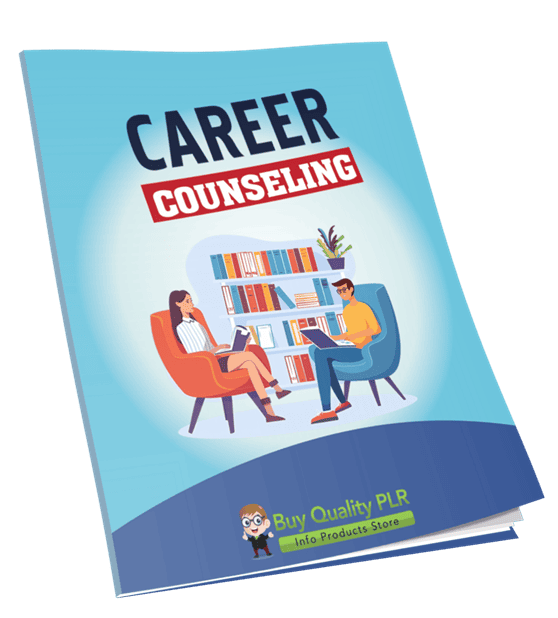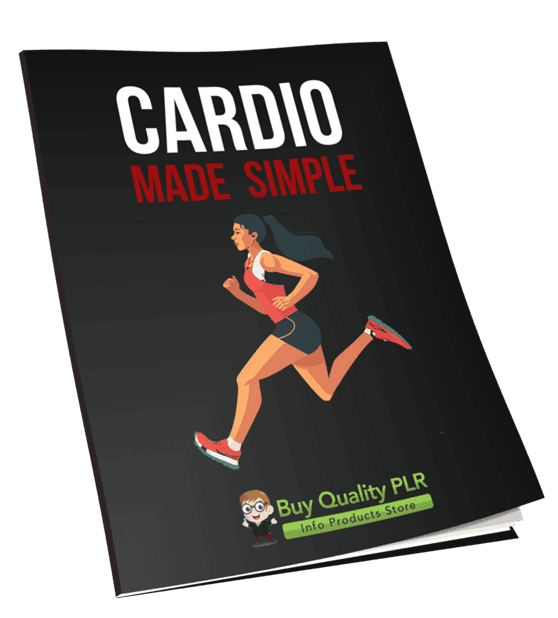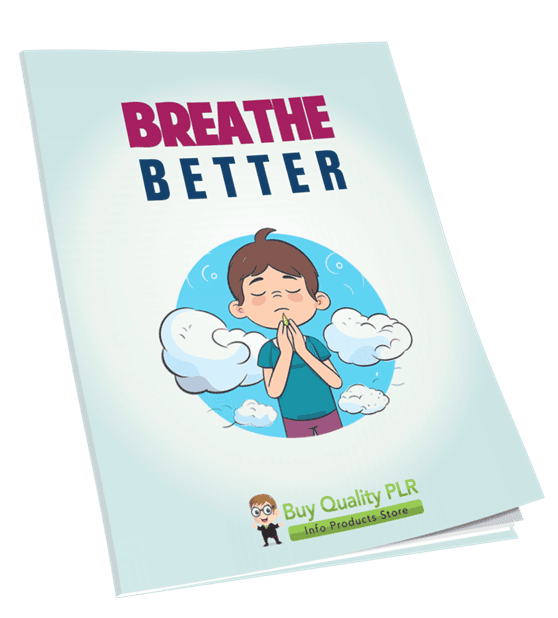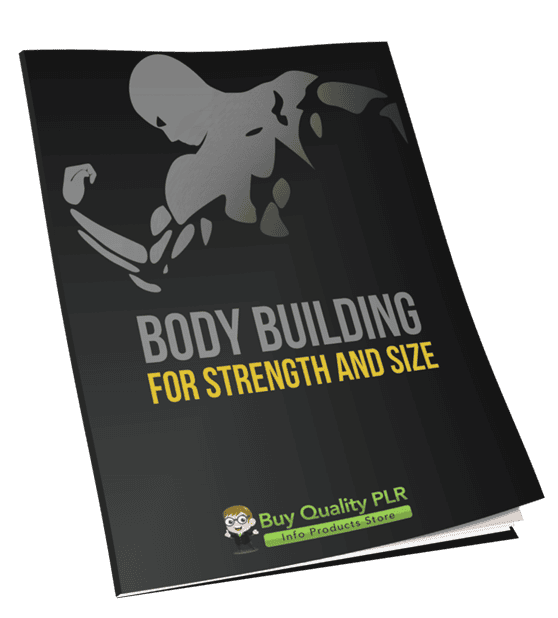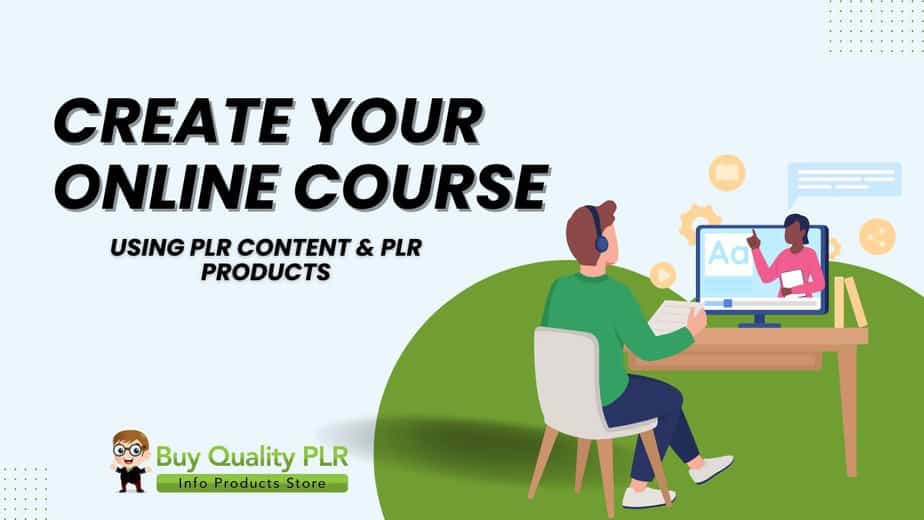
Create Your Online Course: Using PLR Content & PLR Products
in Content Marketing, Digital Products, Make Money Online, PLR Content, PLR Course, Private Label Rights, Using PLR#onlinecourse #plrcontent #plrproducts #coursecreation #passiveincome #digitalproducts #edupreneur #onlinebusiness #infoproducts #createandsell #plrmarketing
Create Your Online Course: Using PLR Content for Success
Creating an online course can be a rewarding venture, both intellectually and financially. With the rise of digital education, the demand for quality online courses has surged. One of the most effective ways to develop your course is by using Private Label Rights (PLR) content. This article will explore how you can leverage PLR products to create a successful online course, providing insights into the types of PLR available, customization strategies, marketing techniques, and ways to monetize your course.
What is PLR Content and How Can You Use PLR to Create an Online Course?
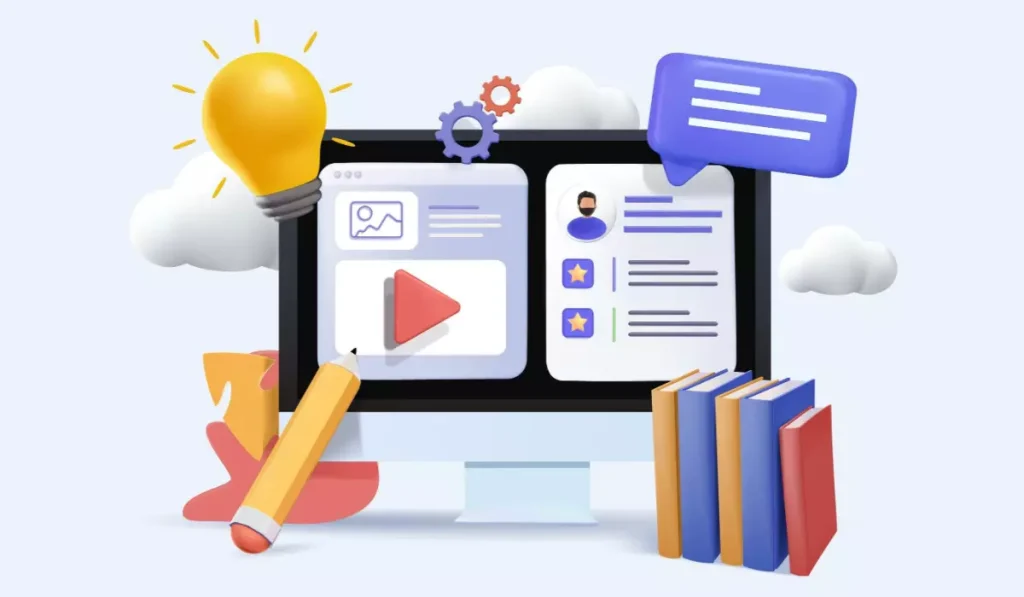
Understanding Private Label Rights (PLR)
Private Label Rights, or PLR, refers to a type of content where the creator allows you to modify, rebrand, and sell the material as your own. This includes articles, eBooks, videos, and other digital products that help you create engaging course materials. By utilizing PLR content, you can save considerable time and effort in content creation, as you are provided with pre-written material that can be customized to fit your course’s specific needs. Comprehending the ramifications of PLR is crucial, as it enables you to construct a course without commencing from the beginning.
Benefits of Using PLR Content for Course Creation
It can take a lot of time to create a high-quality online course, particularly if you’re starting from the beginning. That’s where PLR (Private Label Rights) content comes in. By using PLR, you can save time and effort, all while creating a professional course that provides real value to your audience. Here’s how PLR content can benefit you when creating an online course:
1. Speed Up Course Creation
The most significant advantage of using PLR content for course creation is the speed it offers. Rather than spending days or even weeks writing lessons, researching topics, and gathering information, you can skip the laborious part of content creation and focus on the organization and delivery of the course. PLR gives you pre-written, high-quality content that you can easily repurpose into course modules, lessons, and exercises.
2. Access to Expert-Level Content
PLR materials are often created by professionals who specialize in the subject matter. This means the content is usually well-researched, accurate, and up-to-date. By utilizing PLR, you get access to expert-level materials without needing to be an expert yourself. This is especially valuable for course creators who want to offer high-quality educational resources but may not have the expertise in a particular subject.
3. Customization and Flexibility
While PLR content comes pre-written, it’s designed to be customizable. This flexibility allows you to tailor the content to match your own voice and the needs of your audience. Whether you want to tweak the tone, reformat the material, add your personal insights, or customize the PLR content with multimedia like videos and quizzes, it can be molded into the exact format you envision. This makes it easier to create a course that reflects your brand and resonates with your audience.
4. Reduce Research and Content Creation Time
When creating an online course, one of the most time-consuming aspects is researching and gathering reliable information. PLR has already completed this task for you. You can save hours, if not days, on research and focus on refining the course structure, adding value, and designing your course platform. Whether you’re covering a complex topic or introducing a niche subject, PLR content provides a solid foundation to build on.
5. Cost-Effective
Developing an online course from scratch can be expensive, especially if you need to hire subject matter experts or professional writers to create content. With PLR, you can avoid these costs. By purchasing pre-written content, you significantly reduce your expenses while still providing quality content to your students. It’s a cost-effective solution for both new and experienced course creators.
6. Content Variety for Engaging Learning Experiences
PLR content comes in many forms, including articles, ebooks, checklists, templates, and more. This variety allows you to mix and match different types of content to keep your course engaging. For example, you can use PLR articles as the core material, infuse videos for visual learning, and provide downloadable worksheets and checklists to reinforce key concepts. This combination of media can create a more dynamic and interactive learning experience for your students.
7. Ongoing Value for Your Audience
You can use your PLR content for years to come once you’ve customized and organized it into a course. You can continually offer the course to new students, update it with additional content as needed, and market it across different platforms. The evergreen nature of PLR content allows you to continuously add value to your audience without the constant need to create new materials. Plus, you can repurpose and repackage the content into new formats for maximum reach.
8. Increase Course Offerings with Minimal Effort
You can use PLR content not only to create one course, but also to expand your course offerings. For example, you can take a core course and break it down into smaller, more specialized modules or create a follow-up course by repurposing the content. Using this approach, you can expand your online course catalog without having to start from the beginning every time.
9. Build a Professional Reputation Quickly
Using PLR content gives you the ability to create high-quality, informative courses without years of experience. By leveraging expert-created content, you can position yourself as a knowledgeable and reliable course creator in your niche. As you continue to deliver valuable information and high-quality courses, your reputation will grow, helping you attract more students and build long-term trust within your community.
10. Scalability
One of the biggest advantages of using PLR content for courses is its scalability. Once you create and set up your course, you can market it to an unlimited number of students. Since PLR content is typically sold to multiple license holders, you can offer the course on different platforms or sell it as a standalone product, providing you with multiple revenue streams without adding more workload.
How to Choose Quality PLR Content for Your Course
When creating an online course, it is essential to choose high-quality PLR content. Start by researching credible sources that provide PLR products. Look for content that is well-written, relevant, and up-to-date with current trends in your field. Utilize customer reviews and ratings to gauge the quality of the PLR products you are considering. By selecting the right PLR content, you can ensure that your course delivers value and retains the interest of your learners.
What Types of PLR Products are Available for Course Creation?
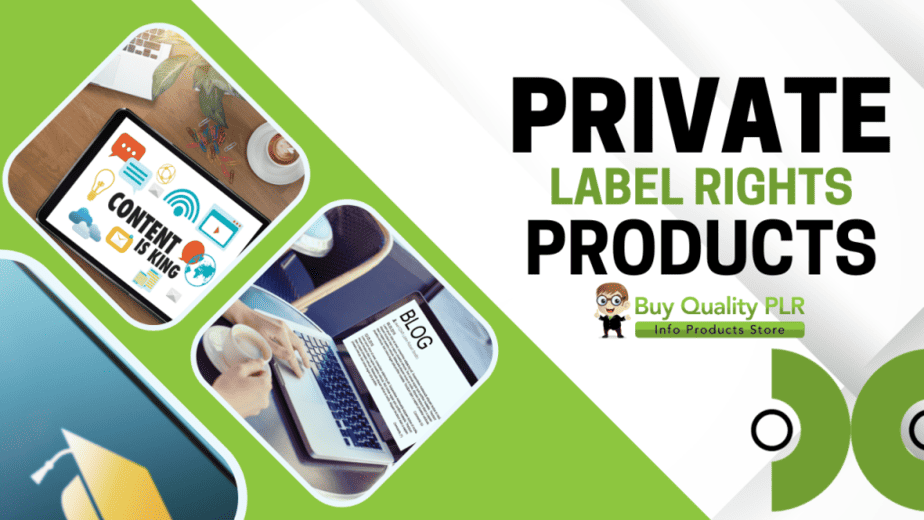
Exploring Different Types of PLR Content
When it comes to creating an online course, choosing the right type of PLR content is key to delivering a comprehensive and engaging experience. There are various forms of PLR products, each suited for different aspects of your course. Whether you’re just getting started or looking to enhance an existing course, understanding the different types of PLR content available can help you curate a rich, diverse curriculum that appeals to a wide range of learning styles. Let’s dive into the most common types of PLR content you can incorporate into your course.
1. PLR Articles
PLR articles are one of the most versatile types of content you can use in your course. These ready-made articles can serve as foundational reading materials for your students. You can include them as supplemental resources for deeper learning or even use them as the core content for each module. PLR articles often come in a structured format, making it easy to customize and adjust the tone or length to suit your specific needs.
How to use PLR articles:
Add them as lesson readings.
Break them down into bite-sized sections or modules.
Use them as discussion topics or prompts for interactive lessons.
2. PLR eBooks
PLR eBooks are longer, more comprehensive resources that cover topics in-depth. They are often broken down into chapters, making them ideal for multi-week courses. You can use eBooks as primary resources or supplementary reading for your students, as they offer a substantial amount of content. With PLR eBooks, you can quickly provide valuable content to your learners and even repackage them into smaller modules for easier consumption.
How to use PLR eBooks:
Divide the eBook into smaller lessons or modules.
Offer it as a bonus resource or a downloadable item for your students.
Use it as a starting point for in-depth course material and further exploration.
3. PLR Videos
PLR videos can significantly enhance the learning experience by adding a visual component to your course. Videos are particularly useful for explaining complex concepts or demonstrating practical skills. They can provide visual walkthroughs, interviews, tutorials, or even simple slideshows. Using PLR videos can save you the hassle of filming your own content while still delivering high-quality instructional material.
How to use PLR videos:
Include them as part of the lessons to provide engaging visual content.
Break down long videos into shorter, digestible clips for individual modules.
Use videos as an introduction to each module or topic.
4. PLR Graphics
Graphics are an essential part of any course, and PLR graphics can save you time in designing visual aids for your lessons. These include images, infographics, charts, and even customizable templates. Well-designed graphics can help clarify complex ideas, make the course more visually appealing, and keep your learners engaged.
How to use PLR graphics:
Incorporate infographics to explain complicated processes visually.
Use charts to present data or statistics.
Add images to your lessons to enhance the overall aesthetic of your course.
5. PLR Courses
If you’re looking for a ready-made course that you can customize, PLR courses are the perfect solution. These pre-built courses often come with everything you need: lessons, slideshows, quizzes, and assignments. You can modify the content to reflect your style, brand, and specific learning objectives. PLR courses can serve as the backbone of your course, saving you a great deal of time and effort.
How to use PLR courses:
Rebrand the course as your own by adjusting the content to match your voice and style.
Add additional material such as quizzes, assessments, or interactive activities.
Bundle multiple PLR courses together to create a comprehensive learning experience.
6. PLR Templates
PLR templates are pre-designed documents that can be customized for specific tasks. You can use checklists, worksheets, planners, and other helpful tools as part of your course. Templates are excellent for giving your students actionable steps and resources to implement what they’ve learned.
How to use PLR templates:
Offer templates as downloadable resources for students to apply the lessons to their own projects.
Use templates as part of interactive assignments or group work.
Customize templates to suit your course content and give them a personal touch.
7. PLR Audio Files
For learners who prefer audio content, PLR audio files can be a great addition to your course. These can range from guided exercises to podcast-style lectures. Audio is also great for busy learners, as it allows them to access content while commuting or doing daily tasks.
How to use PLR audio files:
Use them as companion materials to written lessons or videos.
Create audio-only versions of certain lessons or sections of your course.
Include interviews, case studies, or expert talks as part of the audio content.
8. PLR Sales Funnels
If you’re looking to generate revenue from your course, PLR sales funnels can be a valuable addition. A sales funnel typically includes lead magnets, landing pages, email sequences, and other marketing materials designed to convert leads into paying customers. With PLR sales funnels, you can easily set up an automated marketing system to drive traffic and sales.
How to use PLR sales funnels:
Customize the funnel with your branding and marketing goals.
Use the pre-written emails to nurture leads and convert them into customers.
How to Customize PLR Content for Your Online Course?
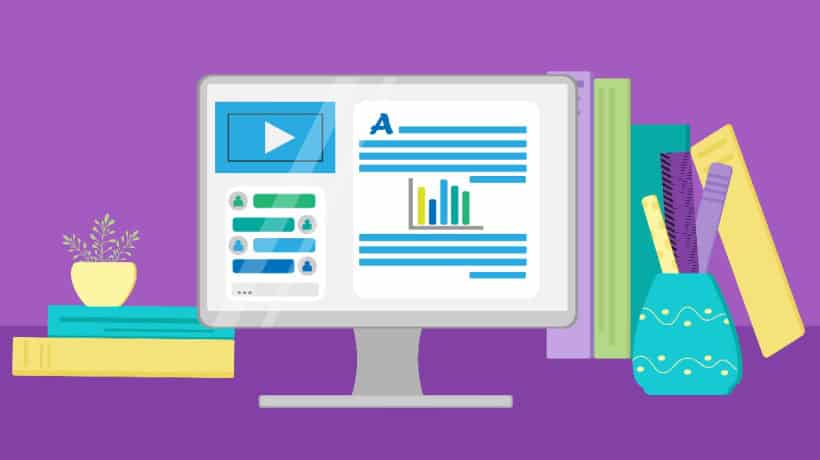
Tips for Customizing PLR Content to Fit Your Brand
Customizing PLR content is essential for creating a product that truly represents your unique brand and resonates with your audience. While PLR content is a fantastic starting point, personalizing it to reflect your expertise, style, and brand values will set your course apart from others. Here are some effective tips for customizing PLR content to make it your own:
1. Edit for Tone and Voice
One of the first steps in personalizing PLR content is to adjust the tone and voice to align with your brand. Whether your style is formal, casual, conversational, or authoritative, modifying the writing to fit your personality is essential. For example, if your brand is known for being approachable and friendly, you may want to rewrite any formal sections to sound more conversational. If you want to emphasize your expertise, consider adding more professional language or technical terms.
2. Add Personal Insights and Examples
Another way to make PLR content uniquely yours is by incorporating your personal insights, anecdotes, or real-life examples. This can help your audience connect with the material on a deeper level. Share success stories, case studies, or your own experiences that reinforce the message of the course. Not only does this make the content more engaging, but it also establishes your authority in the subject matter.
3. Incorporate Your Branding Elements
Ensure that your PLR content reflects your brand’s visual identity. Customize any graphics, fonts, and design elements within the course materials to match your logo, color scheme, and overall aesthetic. This consistency across your content helps reinforce your brand’s recognition and builds trust with your audience. Whether it’s altering the fonts on course slides, changing header styles, or incorporating your logo into every document, cohesive branding makes a significant difference in presenting a professional and polished product.
4. Reorganize and Re-Structure Content
Although PLR content is often well-organized, it may not always align with your preferred flow or learning structure. Take the time to reorganize sections, reorder modules, or break down lengthy content into smaller, easier-to-digest pieces. You can add activities, quizzes, or exercises between lessons to maintain engagement and improve knowledge retention. Reorganizing the course allows you to ensure that the learning experience fits your audience’s needs and expectations.
5. Update Content with the Latest Information
PLR content can be slightly outdated, especially if it’s about fast-moving industries or trends. A key part of customization is updating the content with the latest information, research, or case studies to make sure it’s as relevant as possible. This could mean adding new statistics, modifying industry insights, or referencing recent trends that are crucial for your audience.
6. Expand on Key Topics with Additional Resources
PLR content can be expanded to provide even more value to your students. Consider adding additional resources, such as detailed worksheets, templates, or downloadable PDFs, to support the learning process. By providing extra material, you make the course more comprehensive and enriching, which can increase its perceived value. These resources can also help solidify your brand as one that offers in-depth and actionable content.
7. Add Interactive Elements
To keep your course engaging and learner-friendly, consider integrating interactive elements into the PLR content. This could include quizzes, assignments, discussion prompts, or even live webinars. Interaction is essential for creating an immersive learning experience, and it encourages learners to stay engaged throughout the course. You can also ask your students to participate in challenges, share their progress, or give feedback on what they’re learning, further deepening their connection with the material.
8. Incorporate Affiliate Marketing and Monetization Opportunities
If you want to use your PLR course as a source of income, consider including affiliate links, ads, or promotional offers related to the content. For example, if your course is about digital marketing, you can link to tools or software that you use and trust. By embedding affiliate offers in relevant sections of the course, you can generate passive income while adding value to your students.
9. Update the Course Title and Branding
Even if the PLR content comes with a pre-made title, it’s a good idea to modify the course title to reflect your brand and the unique angle you offer. Tailor it to attract your ideal audience and make it clear what they’ll learn or achieve by taking the course. A compelling title will make your course stand out and entice prospective learners.
10. Personalize the Course Introduction
The introduction sets the tone for your course, and it’s essential to make it personal. Write a brief, welcoming message that explains who you are, what your course offers, and how it will help your students. Let them know what to expect and why this course is unique compared to others. Personalizing the introduction not only builds a connection with your audience but also helps you establish authority and trust from the start.
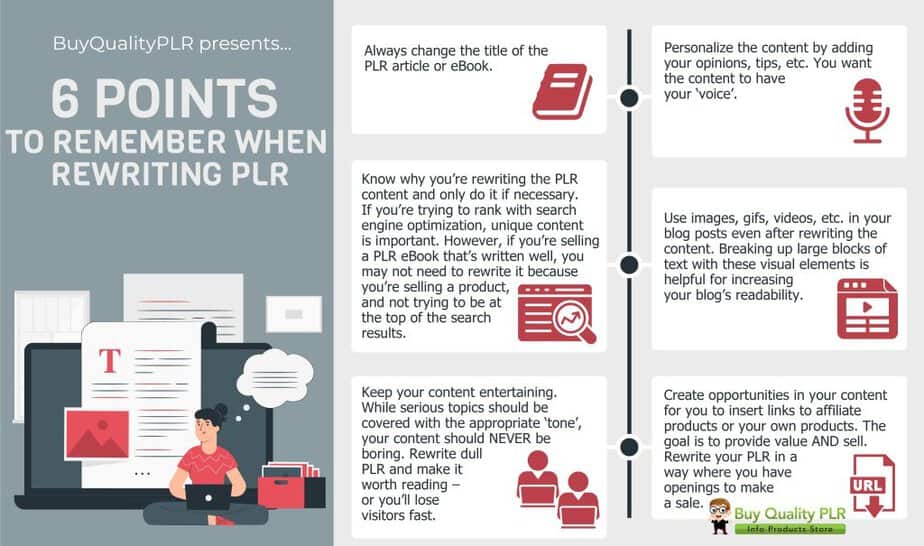
Why Customization Matters
Customizing PLR content is vital to making it your own and standing out in a competitive market. Personalized PLR content demonstrates your expertise, aligns with your brand, and provides value that directly speaks to your target audience’s needs. Without customization, PLR content runs the risk of being generic, leading to decreased engagement and potential customer dissatisfaction.
By investing time into customizing your PLR content, you increase the overall quality of your course or product, enhance customer satisfaction, and build a stronger connection with your audience. With the right personal touch, you can turn any PLR content into a powerful tool for business growth.
Repurposing PLR Content for Engaging Course Creation
One of the most powerful ways to use PLR (Private Label Rights) content for course creators is repurposing it effectively. By transforming pre-existing materials into various formats, you can save time, effort, and resources while providing a diverse learning experience for your students. This approach allows you to make the most of your PLR content and reach a broader audience by catering to different learning preferences.
Here’s how you can repurpose PLR content to build engaging, multi-format courses that will keep learners engaged:
1. Turn Articles Into Video Scripts
An easy way to repurpose PLR articles is by transforming them into video scripts. Video is an incredibly popular learning format, and it allows you to explain complex concepts in an engaging way. Please consider breaking down your PLR article into key points and adapting the content into a conversational script. Add personal anecdotes or real-world examples to make the video more engaging and relatable. Once the script is ready, you can use it to record a video, adding visuals and voice-over narration to further enhance the learning experience.
Example:
PLR Article: “10 Tips for Healthy Eating”
Repurposed: A video script where each tip is discussed in detail, accompanied by images or animations showing healthy meals or simple cooking demonstrations.
2. Extract Key Points for Infographics
Infographics are a visually appealing and easy-to-digest way to present information. Extract key points, statistics, or step-by-step processes from your PLR content and turn them into infographics. These can be shared in your course materials, on your website, or across social media platforms. Infographics help break down complex information into simple, memorable visuals, making it easier for learners to retain knowledge.
Example:
PLR Content: “How to Build Healthy Habits”
Repurposed: An infographic outlining the six steps to building healthy habits, with icons and short descriptions for each step.
3. Create Audio Versions of the Content
Some students prefer audio formats, particularly those who like to learn on the go. You can easily repurpose PLR articles or modules into podcasts or audio lessons. Please consider recording yourself reading the content or adapting it into a more conversational style. This provides your audience with an alternative way to consume the course material, increasing accessibility and engagement.
Example:
PLR Course Module: “Time Management Tips”
Repurposed: An audio lesson where you expand on the key time management strategies and offer tips based on your personal experiences.
4. Break Content Into Smaller Lessons
PLR content can often be comprehensive, covering a broad topic. To make it more digestible, break the content into smaller, bite-sized lessons that can be delivered incrementally. This approach enhances engagement by giving learners manageable chunks of information that they can absorb at their own pace. This works well for both video courses and written materials.
Example:
PLR Ebook: “Complete Guide to Mindfulness”
Repurposed: Divide the ebook into smaller lessons such as “What is Mindfulness?” and “The Benefits of Mindfulness” and deliver them as separate lessons in your course.
5. Develop Quizzes and Worksheets
To increase interactivity and enhance learning, you can repurpose your PLR content into quizzes, exercises, and worksheets. This allows students to actively engage with the material and apply what they’ve learned. Create quizzes based on key takeaways from the content, or design worksheets that encourage learners to reflect on and apply the concepts taught.
Example:
PLR Content: “10 Steps to Effective Communication”Repurposed: A quiz where learners match communication techniques with appropriate scenarios or a worksheet where they apply communication strategies to personal situations.
6. Compile a Resource Guide
Please compile the knowledge from your PLR content into a comprehensive resource guide or toolkit for your learners. Include additional materials like checklists, templates, or recommended tools that align with the course content. This gives your students something they can refer back to after the course, adding value and making the course content more practical and actionable.
Example:
PLR Course: “Financial Planning for Beginners” is an excellent example of how to create a series of educational resources.
Repurposed: A downloadable resource guide that includes budgeting templates, links to helpful tools, and a checklist for creating a solid financial plan.
7. Turn Key Takeaways into Blog Posts
One way to further repurpose PLR content is to break it down into shorter blog posts. This method provides additional value to your students and helps you promote your course. For each major lesson or key point in your course, you can create a blog post that highlights the main takeaway. By publishing these blog posts, you also boost your SEO, driving more traffic to your website.
Example:
PLR Content: “How to Reduce Stress at Work”
Repurposed: A series of blog posts that delve into specific techniques for stress management, such as mindfulness, exercise, and effective time management.
8. Create a Workbook for Hands-On Practice
Another great way to engage students is by creating a workbook based on your PLR content. A workbook provides interactive exercises and activities that encourage students to apply what they’ve learned in the course. You can design prompts, reflection questions, and activities that correspond with each lesson to reinforce key concepts and encourage deeper learning.
Example:
PLR Topic: “Developing Healthy Habits”
Repurposed: A workbook with exercises that prompt students to set their own goals, track their progress, and reflect on their habits.
Creating Unique Content from High-Quality PLR Resources
While PLR content provides a fantastic starting point, your goal should be to create unique content that stands out in the crowded online course marketplace. Utilize high-quality PLR resources as a foundation, but infuse your personal insights, stories, and examples into the material. This enriches the content and establishes your authority on the subject. By creating unique content from PLR resources, you can ensure that your course remains relevant and valuable to your audience.
The Best Strategies for Selling Your PLR Course
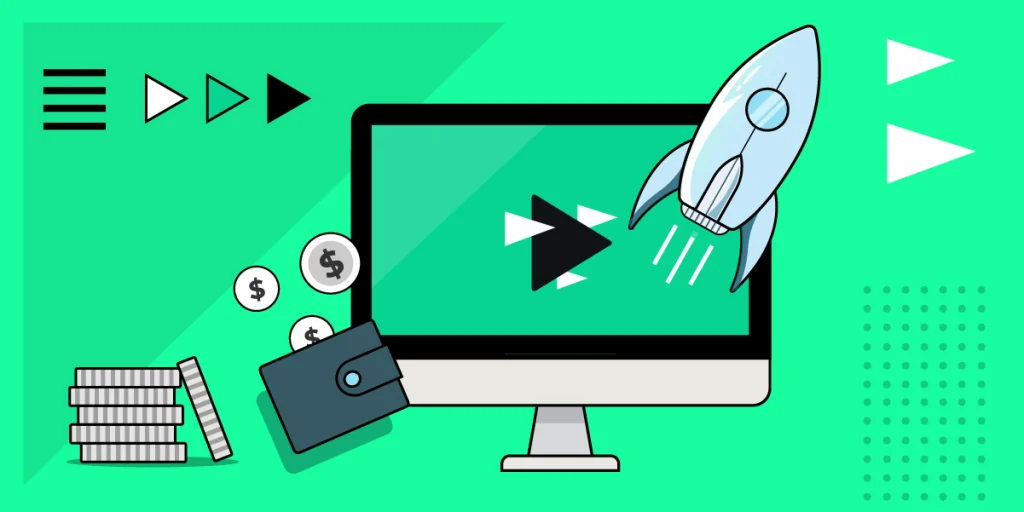
Digital Marketing Techniques to Promote Your Course
To successfully sell your PLR course, you need effective digital marketing techniques. Start by developing a comprehensive marketing strategy that includes search engine optimization (SEO), content marketing, and social media outreach. Utilize keywords related to your course topic to optimize your website and course landing pages, making them more accessible to potential learners. Additionally, creating a blog or video series related to your course content can help establish your expertise and drive traffic to your course offerings.
Creating a high-quality PLR course is just the beginning. To generate sales and maximize the impact of your course, you need to promote it effectively. This involves leveraging digital marketing techniques that can increase visibility, engage potential learners, and drive conversions. Here are some of the most effective digital marketing strategies for promoting your PLR course:
1. Search Engine Optimization (SEO)
SEO is one of the most powerful ways to drive organic traffic to your course landing pages and website. By optimizing your content for relevant keywords, you can rank higher on search engines and attract learners who are actively searching for the topic your course covers.
Keyword Research: Start by conducting keyword research to identify high-volume, low-competition search terms related to your course topic. Tools like Google Keyword Planner, Ubersuggest, and Ahrefs can help you discover keywords that your potential customers are searching for.
Optimize Landing Pages: Use the identified keywords in strategic places like the title, meta description, headers, and body content of your landing page. This will increase the chances of your page ranking higher in search engine results.
- On-Page SEO: Focus on creating high-quality content, fast loading speeds, mobile optimization, and clear call-to-actions to improve both user experience and SEO ranking. The better your landing page, the higher the likelihood that potential students will sign up.
2. Content Marketing
Content marketing is essential for building trust and authority in your niche. By creating valuable content related to your course, you can attract an audience, provide value, and lead them toward purchasing your course.
Start a Blog: Develop a blog where you post helpful articles, how-to guides, and tips related to the subject matter of your course. Use these blog posts to answer common questions, discuss trends, or provide actionable insights that are directly linked to your course content.
Guest Blogging: Write guest posts on other established websites or blogs in your niche. This helps to expand your reach and drive traffic back to your own website, where you can promote your course.
Repurpose PLR Content: Repurpose some of your PLR content into blog posts, eBooks, or downloadable guides. You can also turn course lessons into blog posts to give potential customers a taste of the value your course provides.
3. Social Media Marketing
Social media platforms are excellent tools for building an engaged audience and promoting your PLR course. Each platform offers unique ways to connect with potential students.
Choose the Right Platforms: Identify where your target audience hangs out. For example, LinkedIn is great for business and professional courses, Instagram is perfect for visual content, while YouTube is ideal for creating video tutorials or previews of your course.
Create Engaging Posts: Share snippets from your course, testimonials, and value-packed tips on social media. Encourage your audience to engage with your posts by asking questions, sharing their thoughts, or tagging others who might benefit from the course.
Use Hashtags: Utilize relevant hashtags on platforms like Instagram and Twitter to increase the visibility of your posts. Research trending hashtags in your niche and incorporate them into your posts to reach a larger audience.
Social Media Ads: Consider using paid ads on Facebook, Instagram, or LinkedIn to target specific demographics. Social media advertising allows you to laser-focus your marketing to people who are most likely to be interested in your course based on their interests, behaviors, and location.
4. Email Marketing
Email marketing is a powerful tool for nurturing leads and converting them into paying customers. It allows you to build a relationship with your audience and deliver personalized content that resonates with their needs.
- Build an Email List: Offer a freebie or lead magnet related to your course to encourage people to sign up for your email list. This could be a mini-course, checklist, or a downloadable guide.
Email Sequences: Once someone subscribes to your list, create an automated email sequence that introduces them to your brand and course offerings. Over time, provide valuable content, testimonials, case studies, and special offers to convince them to enroll in your course.
Segment Your Email List: To make your email marketing even more effective, segment your list based on user behavior. For example, if someone downloaded your free guide but hasn’t purchased your course, send them a targeted email with a special offer to encourage them to take the next step.
5. Influencer Marketing
Partnering with influencers or experts in your niche can significantly boost your course’s visibility. Influencers have established credibility with their audience, and their endorsements can make your course more attractive to potential buyers.
Find Influencers in Your Niche: Identify influencers or thought leaders in your industry who have a following that would be interested in your course. Reach out to them with a compelling pitch and offer them free access to your course in exchange for a review or shoutout.
Affiliate Programs: Set up an affiliate program where influencers can promote your course in exchange for a commission on sales they generate. This incentivizes them to market your course more actively and take full advantage of PLR content.
6. Webinars and Live Streams
Hosting webinars or live streams is an excellent way to engage with your audience, showcase your expertise, and promote your course in real time. You can use these platforms to answer questions, demonstrate the value of your course, and directly engage with potential students.
Host Free Webinars: Offer a free webinar on a relevant topic related to your course content. At the end of the webinar, pitch your course as the next step for attendees who want to learn more and deepen their knowledge.
Live Q&A: Host live Q&A sessions where you can address common questions about your course topic. This helps build trust and allows you to present your course as the solution to their needs.
7. Paid Advertising
Paid advertising allows you to reach a broader audience quickly. If done correctly, it can bring targeted traffic to your course landing page and boost sales.
Google Ads: Use Google Ads to target individuals actively searching for solutions that your course provides. With the right keywords, you can drive high-intent traffic to your course sales page.
Facebook/Instagram Ads: These platforms allow you to run highly targeted ads based on user demographics, interests, and behaviors. By promoting engaging content related to your course, you can attract potential students and lead them to your course sales page.
How to Make Money Online with Your PLR Course

Creating Multiple Income Streams with PLR Products
One of the greatest advantages of using PLR (Private Label Rights) content is the ability to create multiple income streams with minimal effort. Whether you’re creating a PLR course or offering related products, there are numerous ways to generate revenue from your content. By strategically packaging your PLR resources, you can expand your business and increase your profitability.
Here’s how you can create multiple income streams with PLR products:
1. Selling Courses and Workshops
Creating and selling a PLR course is the first and most obvious income stream. The beauty of PLR is that it allows you to leverage pre-made, high-quality content and quickly turn it into a course for your audience. The revenue potential doesn’t stop there.
Course Bundles: You can bundle related PLR courses together and sell them as a comprehensive package. Offering discounts on bundled courses will make your offerings more attractive to potential buyers.
Upsell Advanced Training: After someone purchases your basic course, offer them an upsell for more advanced training. This could be a more in-depth course, one-on-one coaching, or exclusive materials that dive deeper into specific topics.
Workshops and Live Sessions: Use your PLR course content to create live workshops or webinars. These events allow you to charge higher prices for more personalized instruction while giving you an opportunity to interact directly with your students.
2. Offering Supplementary Materials
One way to increase the value of your PLR course and create additional income is by offering supplementary materials. Here are some ideas for creating additional income streams from supplementary products:
Ebooks: Repurpose the PLR content into standalone ebooks that focus on niche topics within your course. You can sell these ebooks as low-cost, standalone products or offer them as part of an upsell or bonus.
Printables: Turn PLR checklists, planners, or worksheets into printable resources. You can sell these as downloadable PDFs or offer them as bonuses for students who purchase your main course.
Templates and Guides: Offer editable templates, action plans, and guides that complement the main course content. You could use these to assist students in putting the strategies they learn in your course into practice.
3. Coaching and Consulting Services
After students complete your PLR course, many will want personalized guidance or further support. You can monetize this demand by offering coaching or consulting services related to the course content. For example:
One-on-One Coaching: Offer personalized coaching sessions where students can get direct advice and answers to their specific challenges. You can charge premium prices for individual sessions or offer coaching packages at different levels (e.g., weekly, monthly).
Group Coaching: Host group coaching calls for a larger audience, providing access to expert guidance without the high cost of one-on-one coaching. This allows you to scale your services and reach more clients.
VIP Packages: For high-end clients, offer VIP coaching packages that provide more exclusive services, such as access to a private community, priority email support, and personalized feedback on their progress.
4. Creating Membership Sites
A membership site can provide a steady stream of recurring income by offering ongoing access to exclusive content, community support, and coaching. You can leverage PLR content to continually populate your membership site with new courses, articles, videos, and tools.
Exclusive Content Access: Use your PLR courses and materials as the core content of your membership site. Add fresh monthly content to keep members engaged and encourage them to renew their subscriptions.
Community Engagement: Create a forum or private Facebook group where members can interact, ask questions, and share their experiences. This community aspect can add a lot of value to your membership offering.
Regular Updates: As your PLR courses and materials get updated, give your members access to the latest versions. This keeps your membership site dynamic and provides ongoing value to your subscribers.
5. Affiliate Marketing
You can also earn income by promoting other products that complement your PLR courses. Here are a few ideas:
Course Affiliates: As you create PLR courses, you can partner with other course creators or product sellers in your niche. Offer them a chance to promote your PLR courses on their platforms in exchange for a commission on sales.
Product Recommendations: Within your PLR content, you can recommend tools, resources, or books that enhance the course material. Use affiliate links to these products to earn a commission whenever your students purchase through your links.
6. Selling Physical Products
If you want to expand into physical products, you can sell branded merchandise that aligns with your course. For example:
Books: Print a physical version of your PLR course or ebook. You can sell this at a higher price point, providing your audience with a tangible product to cherish.
Branded Merchandise: Depending on the nature of your course, you can create branded merchandise, like T-shirts, notebooks, or mugs, and sell them to your students.
7. Hosting Paid Webinars and Workshops
Another great way to monetize your PLR content is by hosting paid webinars or workshops. While your course offers comprehensive training, you can host shorter, more specialized sessions for those looking to dive deeper into a specific topic.
Exclusive Access: Charge a fee for special access to your live sessions, where you discuss a particular aspect of your course in more detail.
Q&A Sessions: Offer a live Q&A session where students can get personalized answers to their questions at a cost.
Setting Pricing Strategies for Your Course
When it comes to setting pricing strategies for your PLR course, consider the perceived value of your content. Research similar courses in your niche to determine competitive pricing. Additionally, consider offering tiered pricing or early bird discounts to incentivize enrollment. By strategically pricing your course, you can attract a wider audience while still ensuring a profitable return on your investment in PLR content.
Tips for Upselling and Cross-Selling PLR Products
Upselling and cross-selling can significantly boost your income when selling a PLR course. Consider offering advanced courses or exclusive content packages to students who have already enrolled in your primary course. You can also bundle related PLR products at a discounted rate, enticing students to invest in additional materials. By implementing effective upselling and cross-selling strategies, you can maximize your earnings and provide even greater value to your course participants.
Frequently Asked Questions
Q: What is PLR content, and how can I use it to create my online course?
A: PLR content, or private label rights content, is material that you can edit, customize, and use as your own. You can leverage PLR content to create an online course by repurposing it, adding your insights, and tailoring it to fit your audience’s needs.
Q: What are the types of PLR products available for creating an online course?
A: There are various types of PLR products available, including PLR articles, eBooks, videos, and graphics. You can choose high-quality PLR content to create engaging course materials that resonate with your learners.
Q: How can I customize PLR content to fit my brand?
A: To customize PLR content, you should edit the text, add your personal touch, and incorporate your unique perspective. This helps ensure the content aligns with your brand identity and engages your audience effectively.
Q: What are some tips for customizing PLR content effectively?
A: Some tips for customizing PLR content include rewriting sections to reflect your voice, adding your experiences, incorporating relevant examples, and ensuring the content flows well in the context of your course.
Q: How can I ensure the quality of the PLR content I use?
A: To ensure quality PLR content, seek reputable sources that offer high-quality PLR. Read reviews, check sample content, and ensure it is updated and relevant to your niche before integrating it into your online course.
Q: Can I repurpose PLR content for different types of digital marketing?
A: Yes, you can repurpose PLR content for various digital marketing strategies. For instance, you can turn a PLR article into a video, a blog post, or social media content, thereby maximizing its reach and effectiveness.
Q: Would it be possible to sell PLR products I create from PLR content?
A: Absolutely! You can create and sell your own PLR products using high-quality PLR content. Just ensure you comply with the licensing terms of the original PLR material when doing so.
Q: What are the advantages of using PLR content for course creation?
A: The advantages of using PLR content include saving time on content creation, accessing a wide variety of topics, and being able to quickly launch an online course. It also allows you to leverage existing content to create unique offerings.
Q: How do I find quality PLR content to create my online course?
A: To find quality PLR content, search for trusted PLR websites, join PLR membership sites, or look for PLR marketplaces. Always review the content before purchasing to ensure it meets your standards.


